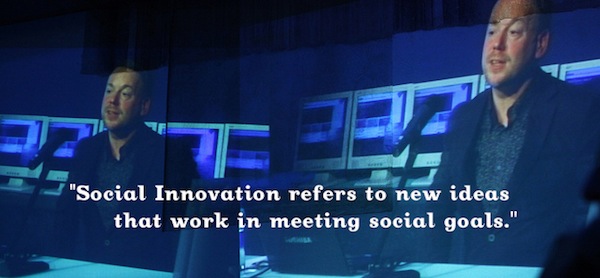Post
From Mulgan to Ghosh: developments of Social Innovation
Already in 2013 during the Meet the Media Guru event featuring Geoff Mulganwe had found out how difficult it is to give a definition of the term Social Innovation. Nevertheless, the one that best overcomes territorial and disciplinary boundaries is offered by the same Mulgan and his collaborators in Social Innovation. What it is, why it matters and how it can be accelerated.

Within this definition fall hundreds of experiences, connected with one another by their push towards change in order to experiment and reflect on innovative processes.
The notion of social innovation immerses us into the field of social needs, in pursuit of strategies to tackle the needs perceived as indispensable for survival: school, healthcare, government, resources. What fascinates about Geoff Mulgan’s speech, also reported in the book “Social Innovation”, published by Egea in the collection A tu per tu con la cultura digitale, is the consistency with which readers are invited to change and metaphors are spun. Geoff speaks about bees and locusts, cruel and compassionate bears, leaving in our hands the power to choose and innovate.
Still, metaphors are the first push; as we venture deeper into the Nesta websitethere are many tangible projects. Of all, we were most impressed by Longitude Prize, an award just launched, focusing of medicalissues tackled by a community of experts to find a cheaper and viable solution.
In this case, too, the image of the boat is recurrent. If Mulgan drew inspiration from steamboats towing the sailing ship in Turner’s painting, Longitude Prize takes the name from a 1714 challenge that had involved scientists, astronomers and navigators in an attempt to calculate longitude Not everybody knows that in order to solve that dilemma the British government introduced the Longitude Act, which offered a reward of 20,000 pounds to anyone who would find a solution. This is one of the first examples of Open Innovationto createbottom up solutions to daily problems.
Tamar Ghosh, lead of Longitude Prize at Nesta, boasts a long experience in healthcare, well-being and innovation. Before starting to collaborate with Nesta, he directed two social enterprises in the healthcare sector and devoted her work to developing and implementing strategies for international NGOs.
His greatest commitment, which is also visible in Longitude Prize, consists of causing a change in traditional models, trying to make healthcare systems as inclusive as possible, involving society in the most important topics and opening to innovation as the community suggests it.
“New technologieshelp patients better understand their body and their health. Peer to peer platforms, the improvement of clinical interfaces changed the way data are developed and used. Today we can monitor some aspects of our health using Apps and taking the power of keeping healthy in our hands. Social innovation has encouraged more democratisation in the healthcare sectorof which the pharmaceutical industry is a crucial component”.
